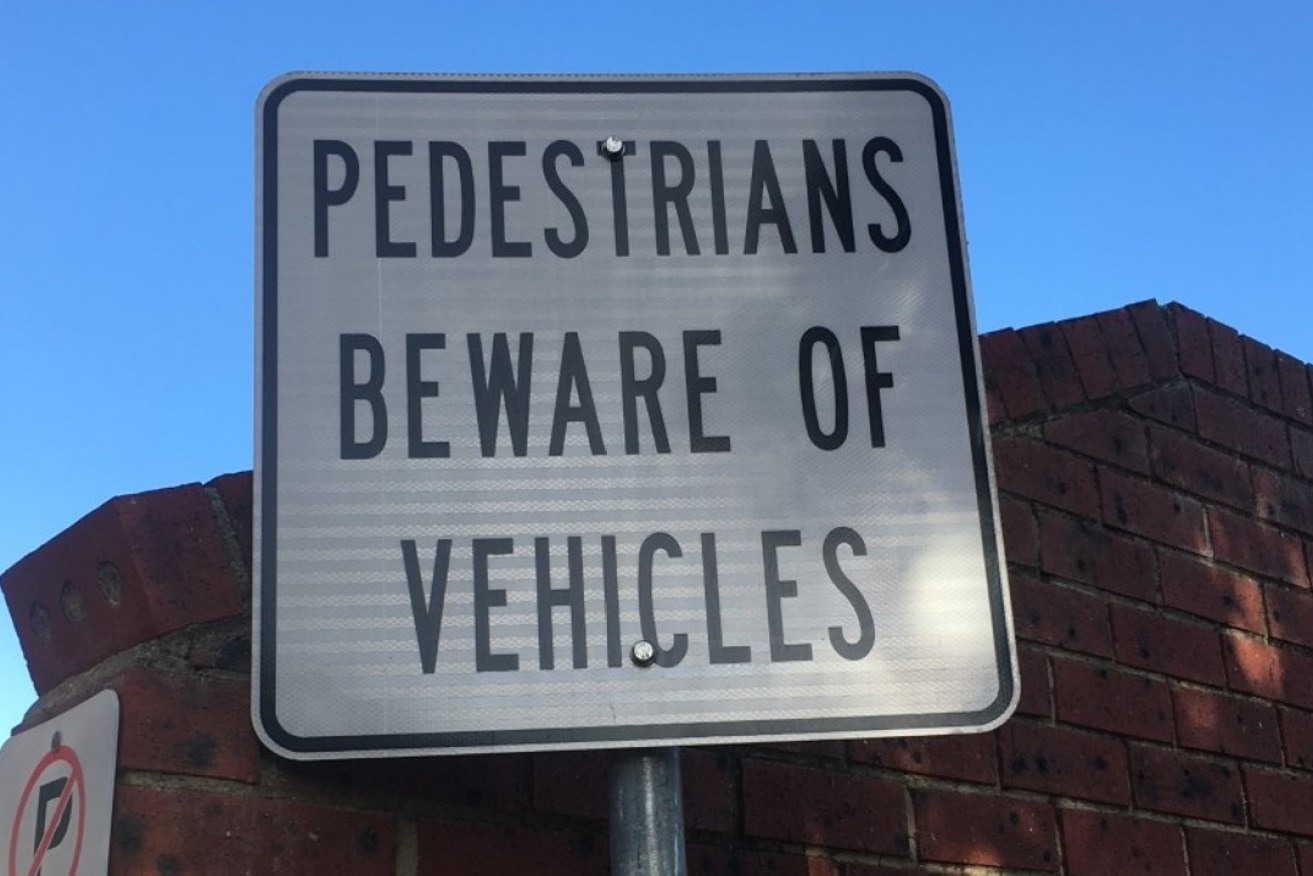Pedestrian safety: Who is responsible?
As the road toll soars and pedestrian deaths nearly double in a year, Margaret Brown argues that road projects and priorities leave pedestrians and their safety a dangerously long way behind drivers.

The South Australian road toll for 2023 has reached 108, significantly more than the total of 71 for all of 2022, and there have been 800 serious injuries.
The number of pedestrians killed on SA roads to date in 2023 is 17, compared to eight for all of 2022.
The 101st of the deaths on our roads this year was 18-year-old Charlie Stevens, who was hit by a car while celebrating with his friends after finishing school. This heartbreaking event reminds us all of the terrible impact on family, friends and communities of each one of these deaths on our roads.
Before the last state election, I wrote in InDaily that the Liberal Government had failed to encourage walking or pedestrian safety. The SA Labor Party went to the election with a policy of ‘safer and faster travel’ on South Road, and no policies on pedestrians or walking. The state Labor Government has been in power for over a year and a half now. What have they done to increase pedestrian safety?
The Australia-wide road toll is also alarming, with 1253 deaths on the roads in 2022 (the highest in five years), of whom 25 per cent were aged 25 or under. Yet responses to the road toll are seen as the responsibility of the states. Is this approach working, and could the federal government do more?
In the absence of an obvious government spokesperson on road safety, the SA media usually turns to the RAA for comments. This demonstrates that road safety is not a priority for the current government
In South Australia there is no Minister for Road Safety. The media sometimes calls on the Minister for Transport, Tom Koutsantonis, to make a statement about road safety. Joe Szakacs, the Minister for Police, Emergency Services and Correctional Services, is sometimes said to have responsibility for road safety, although he is rarely asked to comment in the media.
In the absence of an obvious government spokesperson on road safety, the SA media usually turns to Charles Mountain, Senior Manger Road Safety at the RAA, for comments on road safety. This demonstrates that road safety is not a priority for the current government.
In February 2023 the government released South Australia’s Road Safety Action Plan 2023-2025. The action plan mentions pedestrians in its policies targeted at “vulnerable road users”, but only one policy, dealing with school zones, specifically targets pedestrian safety. The plan doesn’t mention people with disability.
Following the release of the Road Safety Action Plan, the Labor Government announced some road safety initiatives.
The 2023-24 State Budget included a $98 million road safety package, which will cover upgrades to selected roundabouts and rural roads, plus $6.2 million over four years for road safety education campaigns. The roundabout and rural roads upgrades promoted in the budget do not include any measures to improve pedestrian access or safety. The small amounts spent on road safety research and campaigns should be compared to the estimated $15.4 billion cost of the River Torrens to Darlington Road project. Road safety is not prioritised in SA and pedestrian safety often slips off the agenda.
When the SA government does concern itself with road safety, pedestrians are often overlooked. THINK! Road Safety is a government initiative to encourage all road users to think about road safety. The website does not mention pedestrian safety.
The recent discussion paper on South Australia’s 20-Year State Infrastructure Strategy focuses on the productivity of the economy, although it does pay attention to sustainability and inclusion. However, pedestrians are only mentioned in passing: there is no attention to pedestrian safety or even footpaths, and nothing about children, older people and people with disability as pedestrians.
The Department for Infrastructure and Transport’s website and annual reports emphasise infrastructure projects and initiatives to keep traffic moving, not safety. The DIT website refers to “safer vehicles”, which is about vehicles that are safer for drivers and passengers, not for pedestrians. It is rare to see any mention of pedestrians or pedestrian safety. DIT’s Disability Access and Inclusion Plan (a statutory obligation of all government agencies) expired in 2022, indicating a lack of concern for the most vulnerable pedestrians.
Walking is good for health, but pedestrian safety features are rarely prioritised in new road infrastructure in South Australia.
The government continues to make more, wider roads, wider intersections (removing trees and shade), with longer slip lanes, encouraging higher speeds. Apart from the lack of attention to pedestrian safety, these infrastructure projects increase heat in urban areas and encourage the continuing production of CO2 emissions. It is a modern-day contradiction: we should be getting out of our cars and walking whenever possible as it is our last chance to slow the catastrophic effects of a warming planet.
The SA Government road strategies and websites fail to mention several important road safety issues.
They do not mention the increasing numbers of large passenger vehicles, such as SUVs and pick-up trucks, and their increased risks to pedestrians. They promote using trucks to move freight, despite the risk to pedestrians. They have nothing to say about tinted windows, which make it impossible for pedestrians to see the driver, nor bull bars, which are banned in many countries and are known to be a threat to pedestrians’ lives.
It is clear that the SA government’s priority is building new road infrastructure to keep the traffic moving
And the government does not mention that the long-term effects of road injuries increase the demand for disability services and NDIS funding. Why don’t the Minister for Health and the Minister for Human Services take the lead on road safety?
It is also clear that the government needs to put more effort into driver education. The RAA recently reported that SA drivers are running red lights more than ever. We know that drink driving, drug driving and driver distraction are still significant problems. Recent research has also shown that many drivers do not know the road rules concerning giving way to pedestrians when turning.
Policy changes that are perceived to restrict individual freedoms always meet with resistance. When the compulsory wearing of seatbelts and random breath testing were introduced, they were unpopular and met with vocal campaigns from opponents. Yet now they are seen as sensible policies that save lives. The government just needs more courage and commitment to prioritise pedestrian safety.
The federal government reaffirmed its commitment to road safety in the 2023-24 Federal Budget with a policy of Vision Zero – no deaths on Australia’s roads by 2050.
Here the Australian government is belatedly following the lead of the World Health Organisation and the International Decade of Action for Road Safety. Yet there is no collaboration between the states on road safety policies. There are inconsistencies between the Australian states on driver education, licence rules and road rules.
Surprisingly, states do not even share detailed data about road safety, road policing and the quality of their roads with the federal government. A federal agreement about road safety data sharing is being negotiated, but the states are reported to be reluctant to hand over all their information about their roads.
The government’s priority is clearly building new road infrastructure to keep the traffic moving. Despite the occasional rhetoric about sustainability and inclusion, economic growth is still the priority.
Strategies to improve pedestrian safety are fragmented and no one in the state government is willing to take responsibility. Why can’t our children walk safely across the road in South Australia?
Margaret Brown is an Adjunct Research Fellow at the University of South Australia




